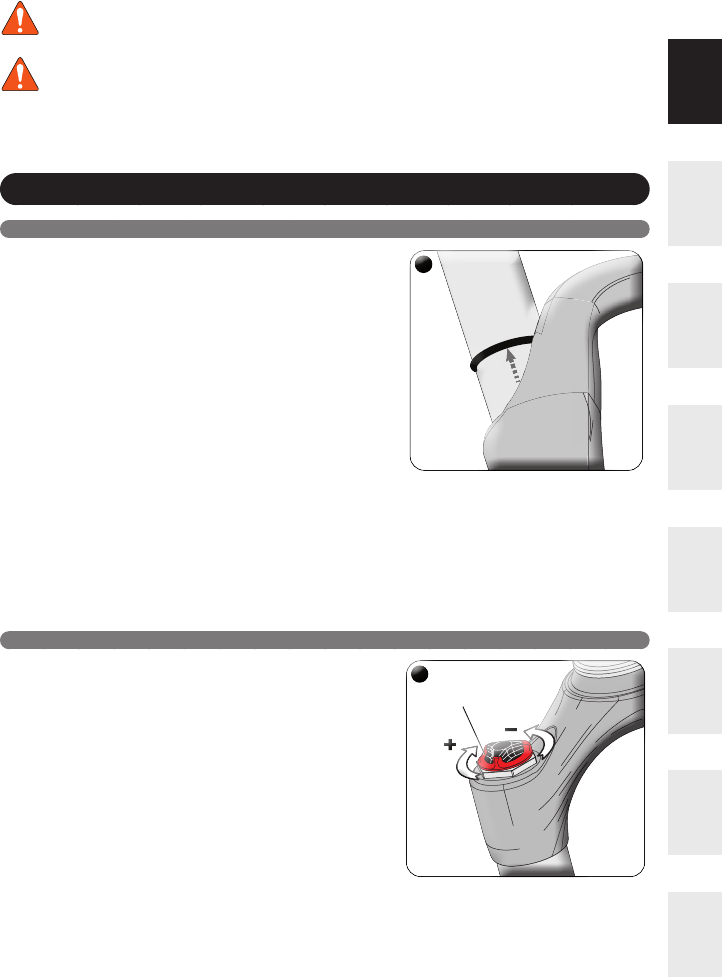
9
USA
FRADEUESP ITANLDPRTJPN
Fork pressure range is 40 to 125 PSI. Do not exceed 125 PSI. Exceeding the
recommended limit can result in damage to the fork.
Avoid lowering pressure too far and bottoming out too often and too hard, which can
also result in fork damage.
NOTE: Air pressures and rebound/compression settings are suggested recommendations only
and provide a starting point for the rider. Adjust for preference/riding style.
SETUP
SETTING AIR PRESSURE AND SAG
Setting the air pressure is crucial to getting the
best performance from your fork. To achieve proper
suspension balance, set the rear shock pressure
before setting the fork pressure. The air chart on
the previous page is designed to get you in the
approximate sag range.
Use a high-pressure shock pump to add air. Sag 1.
is based on a % of stroke of the fork. Set sag
according to the chart as a starting point, then
adjust for preference, terrain and riding technique.
Wrap a zip tie around the stanchion. Push the zip 2.
tie down to the seal, then gently sit on the saddle
without bouncing (apply rider weight only to the bike) to compress the fork and
displace the zip tie, then measure the distance between the fork seal and the zip tie
(sag). The rider should be in full ride gear and sitting in a normal riding position when
setting sag.
To maximize performance, monitor travel for the rst few rides. The goal is to reach 3.
90-100% of travel a few times during a ride without harsh bottoming. If full travel is
not being reached on occasion during a normal ride, lower pressure until it does.
ADJUSTING REBOUND
The red knob (top of right leg) controls the
rebound damping, the rate at which the fork returns
after the fork has been compressed.
Turn the knob clockwise for slower rebound
(slower speeds, bigger hits).
Turn the knob counter-clockwise for faster
rebound (higher speeds, small bumps) and more
traction.
HW^
BWS
"
ASOZ
HW^
BWS
"
ASOZ
#
@SP]c\R
9\]P
AZ]e
4Oab
#
@SP]c\R
9\]P
AZ]e
4Oab


















